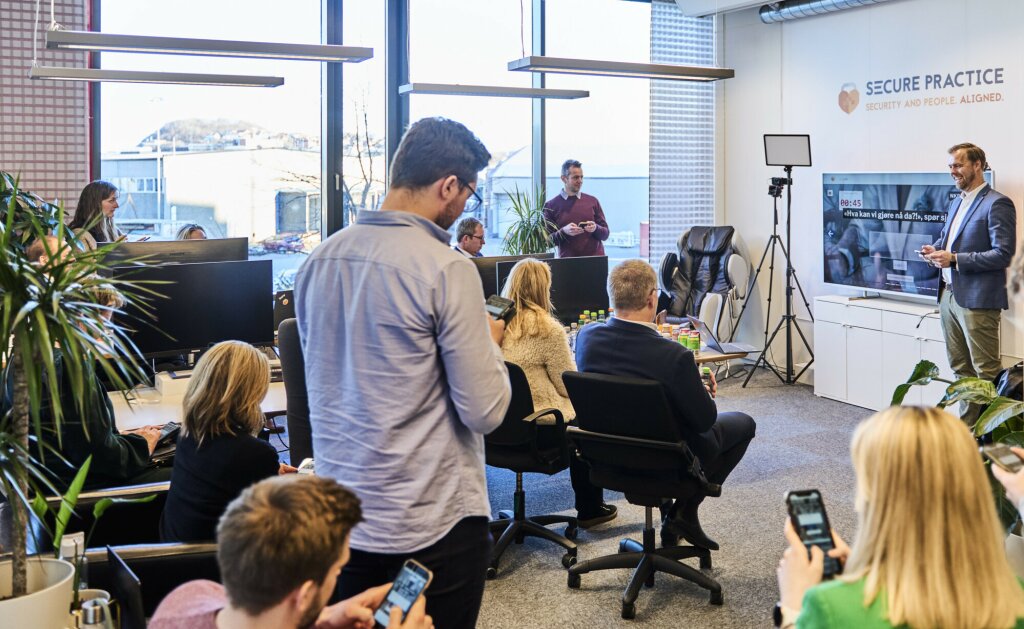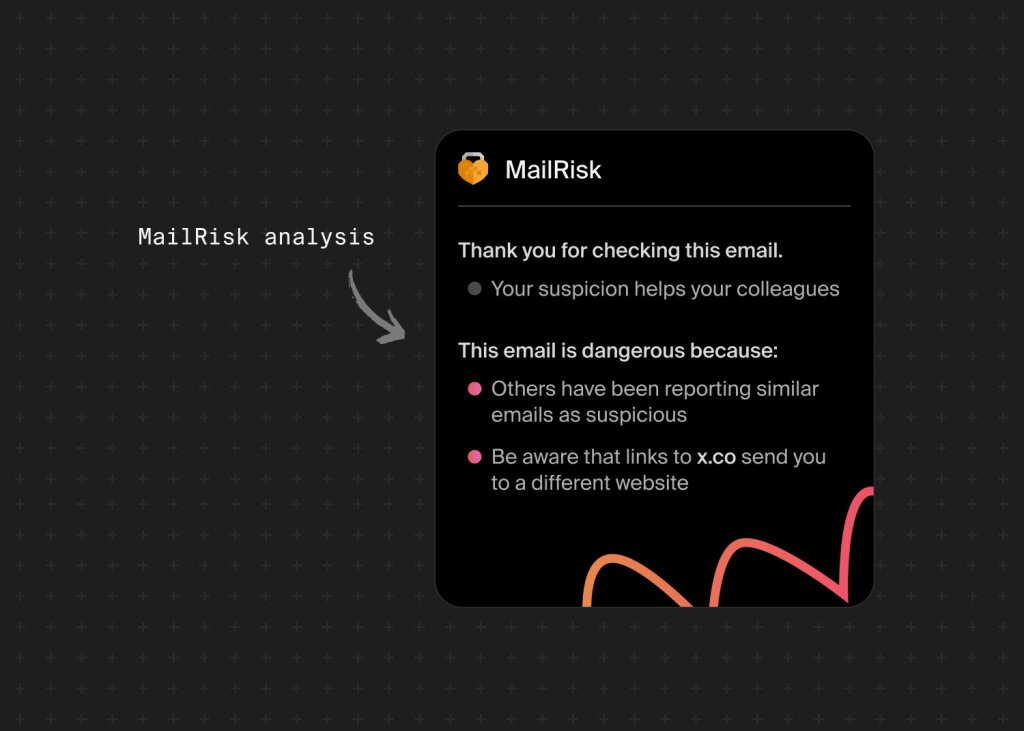Security awareness leaders are often asked to “just get something launched.” A quick campaign. A phishing simulation. A round of training.
And honestly? That sounds amazing.
With stretched bandwidth, growing expectations, and multiple hats to wear, the idea of security awareness automation—a “big green button” that launches your whole program with a single click—is deeply appealing.
But like most shortcuts, it glosses over the hard part.
Building a real security culture and measurable, behavioral change across departments and geographies requires more than automated delivery. It takes clarity, ownership, and momentum.
Let’s explore how to balance effort, value,and speed in your security awareness program, and how Secure Practice helps you turn automation into impact.
Why the idea of a “big green button” is so appealing
Many awareness leaders are juggling multiple roles. You're expected to reduce human risk, meet compliance goals, improve engagement, and track meaningful metrics—often without a full team or clear direction.
So the idea of a single green button that automates your awareness program makes total sense. Who wouldn’t want a way to launch quickly and check all the boxes?
At Secure Practice, we’ve been listening closely to these needs and we’re actively exploring what that kind of green button could look like as a one-click security awareness automation solution.
What happens when you click it?
What kind of results does it create?
And, just as importantly, how do we make sure it supports your human risk management (HRM) efforts and long-term goals?
The challenge is building something that’s simple to start, yet flexible enough to fit into culture-driven security programs. And it’s one we’ve accepted.
The goal isn’t to automate everything. It’s to create an on-ramp to scalable training that you can shape, evolve, and grow over time.
Because the green button isn’t the destination. It’s the beginning of something smarter.

Effort–value–speed: the framework that shapes every security awareness program
When you're responsible for building or running a continuous security awareness program, you constantly trade between speed, impact, and sustainability.
Fast is good. Easy is good. But what happens when they come at the cost of long-term effectiveness?
To help visualize these tradeoffs, we use a simple but powerful model: the effort–value–speed framework:
Low effort + fast = low value
You hit send, people complete training, and boxes are checked. But behavior rarely changes, and your HRM goals stay out of reach.High effort + high value = security culture change
You invest more time upfront, customizing messages, aligning with business needs, and tailoring by audience. It’s slower to roll out, but it creates lasting results that align with your awareness program strategy.Fast + high value = possible, but only with the proper support
You need strong security awareness tools, leadership buy-in, clear priorities, and room to experiment to achieve speed and impact. This is the “sweet spot”, but it requires infrastructure, not shortcuts.
Awareness programs are both delivery and behavior change systems. And every system works within constraints. The effort–value–speed framework helps you see where you’re investing, and what that means for your outcomes.

Our customers start from all points on this framework. Some are focused on audits or compliance deadlines, using fast-start templates and prebuilt content. Others come in ready to build a tailored approach, aiming for measurable change across global teams.
The important thing isn’t where you begin, but that you understand the tradeoffs. And that you move with intention, not pressure.
That’s why we encourage teams to think of security awareness automation as scaffolding, not structure. It gives you support, speeds things up, and helps you scale. But it’s what you build on top of it—your tone, timing, targeting, and feedback loops—that defines the value of your program.
Self-check: where are you on the framework?
| Current goal | Your program mindset | Best next steps |
|---|---|---|
| Launch fast to meet the audit | Speed + compliance | Use a ready-made journey to launch fast, then layer in timely nudges |
| Build engagement in teams | Value + effort | Customize tone, map to roles, layer communication formats |
| Change long-term behaviors | High effort + high value | Align with leadership, reward progress, and embed in daily flow |
What security awareness automation can help you do (and what it can’t)
When done right, automation is one of your greatest assets. It brings consistency, scale, and relief from the repetitive parts of your workflow. Especially in small teams or part-time roles, security awareness automation becomes the scaffolding that holds your efforts together.
What automation does well:
Delivers consistent, scheduled training across teams, languages, and time zones
Saves time on manual tasks like formatting emails, uploading content, or sending reminders
Enables scalable training that can reach hundreds without needing to start from scratch each time
Tracks surface-level human risk management metrics like clicks, completions, and engagement spikes
Automation helps you move fast and stay organized. It’s excellent at distribution.
But distribution ≠ transformation.
What automation can’t do:
Understand context, like the difference in tone needed for a finance team vs. a warehouse team
Translate risk into relevance for specific job roles or business priorities
Make human risk management personal, with the kind of shift that only comes from clear, honest, tailored messaging
Build bridges between security and communications, or between program leads and skeptical business units
Security awareness automation helps you scale training. But real impact is built by people like you, who bring the context, empathy, and strategy that software alone can’t.
Why your role still matters (more than ever)
No platform (ours included) knows your colleagues like you do.
It doesn’t know the tone your HR manager responds to
It can’t sense which regional director consistently downplays risk
It hasn’t sat in a leadership meeting where someone quietly said, “Do we really need this security training?”
That’s why your role is more than just "sending content." You are the translator between security goals and human behavior. You rely on awareness automation to support and streamline your effort but know that true security culture change happens in the follow-up. In the tone. In the hallway chat. In the nudge.
You’re the guide who helps people understand why this matters, not just what to click.
The Secure Practice platform provides the structure and automation to support your human risk management goals, but it’s your insight, advocacy, and leadership that bring it to life.
Fast starts, strategic growth: how to keep momentum going
Launching fast is valuable, sometimes even essential, especially if you’re responding to compliance requirements or organizational pressure. It’s okay to start with speed as long as you don’t stay there.
At Secure Practice, we believe speed should be a starting point, not your strategy.
It’s the reason we’ve designed our platform with automated training workflows to help you start fast, then grow strategically:
Begin with a prebuilt awareness journey: ready-to-launch campaigns that map to common threats and regulatory needs
Tailor by role, risk level, or business unit: with customizable phishing simulations and targeted content to create relevance without starting from scratch
Layer in nudges: automated micro-messages that reinforce secure behaviors like safe email handling, MFA usage, or phishing reporting
Embed interactive elements: quizzes, micro-lessons, or live cybersecurity exercises to make learning engaging and memorable
Go beyond clicks: track behavior trends, high-risk segments, and attitude shifts through human risk metrics
As we’re working on our security awareness automation solution (our version of the “big green button”), we’re carefully considering real-world constraints and the value it can deliver across different maturity levels.
So tell us: as your organization grows, your risks shift, and your people change—what do you need most right now?
Whether you're striving for compliance, communication, or security culture change, we're here to help you get there.
Secure Practice helps you balance speed with strategy
We give you the infrastructure and the space to build an awareness program that works for and with you.


